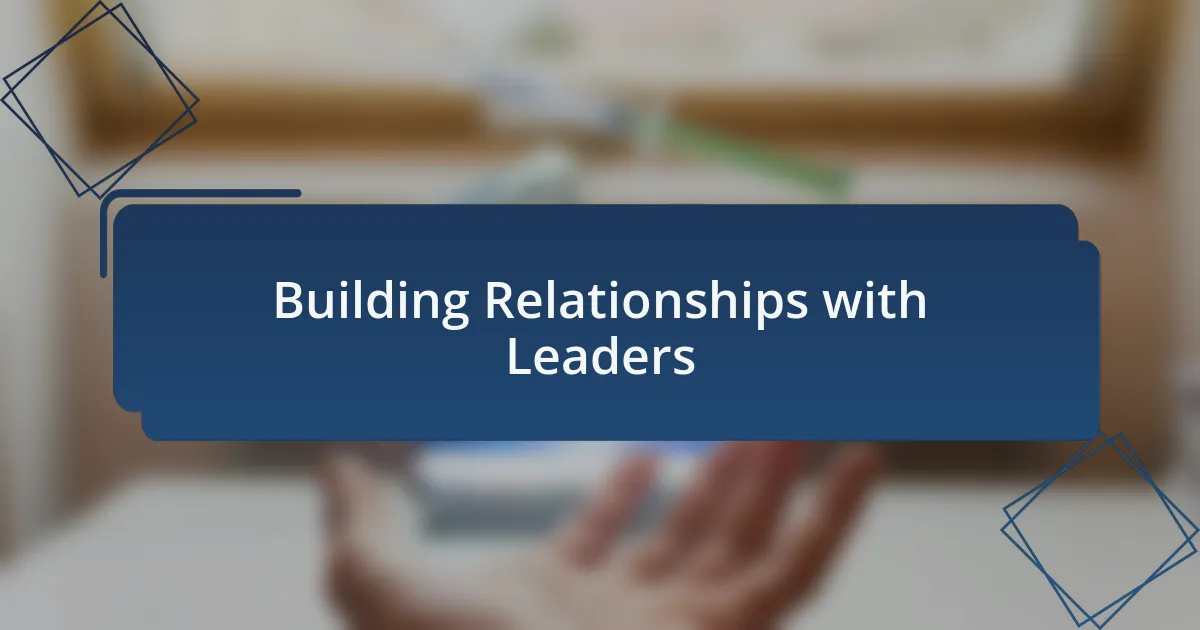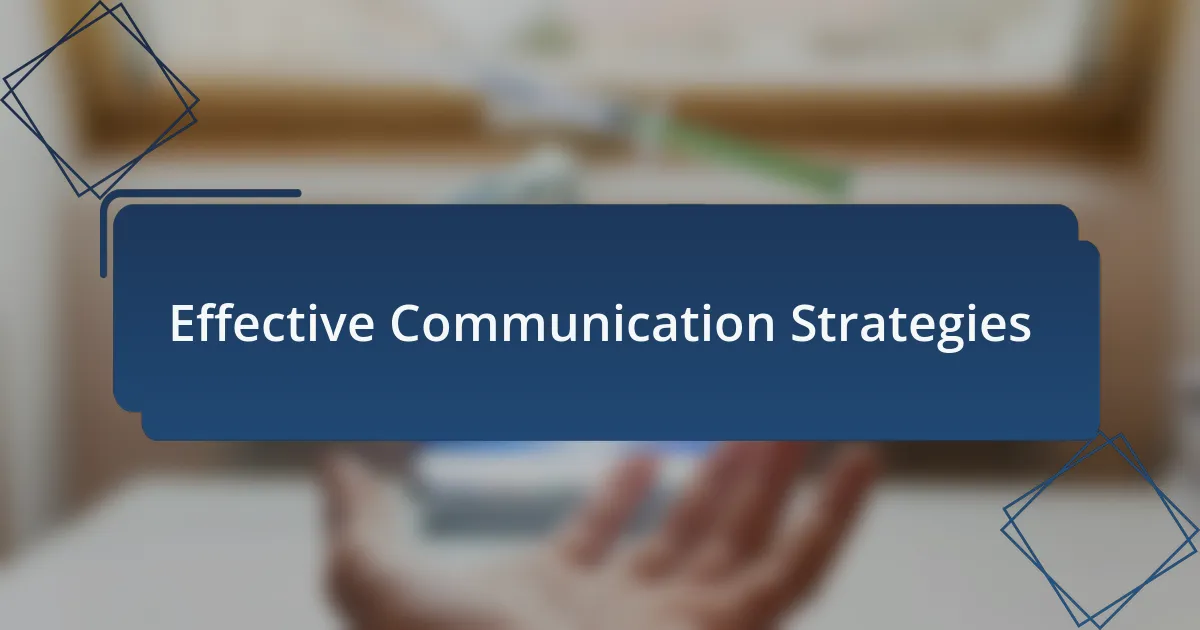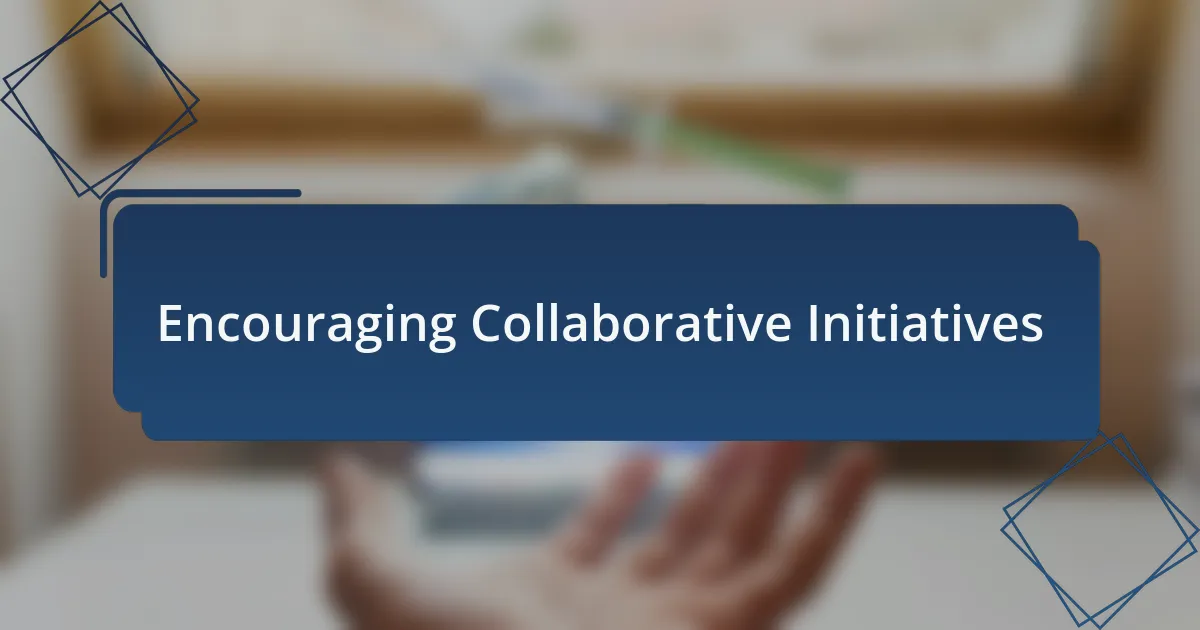Key takeaways:
- Cerebral Palsy support extends beyond physical needs, emphasizing the importance of emotional connections and community support.
- Local leaders are crucial in fostering dialogue, connecting families to resources, and inspiring collaborative initiatives.
- Building genuine relationships with local leaders enhances trust and encourages effective communication, leading to impactful community projects.
- Sharing personal experiences can inspire collaboration and motivate community members to advocate for changes that benefit those with Cerebral Palsy.

Understanding Cerebral Palsy Support
Understanding Cerebral Palsy support goes beyond the physical implications of the condition; it encompasses emotional and social dimensions as well. I remember attending a local support group where parents shared their daily challenges. Listening to their stories made me realize how vital community connection is—it’s a constant reminder that no one is truly alone in their journey.
When I think about support for families affected by Cerebral Palsy, I often wonder, how much of our understanding is rooted in empathy? The emotional landscape can be complex, filled with joy, grief, and resilience. I’ve seen firsthand how small gestures—like a compliment or a listening ear—can uplift someone’s spirits in a way that physical support alone cannot.
Moreover, effective support systems should tailor their approach to individual needs. I recall meeting a young adult with Cerebral Palsy who had navigated numerous therapies, but what truly made a difference was finding a mentor who understood his struggles. This personal connection amplified his confidence, demonstrating that navigating life with Cerebral Palsy is as much about building trust and understanding as it is about medical interventions.

Importance of Local Leaders
Local leaders play a crucial role in cultivating vibrant support networks, especially within the context of Cerebral Palsy. I’ve observed how local leaders foster dialogue among families, creating spaces where people feel safe to share their experiences. It’s empowering to see these leaders act as liaisons, connecting families to resources and services that might otherwise go unnoticed.
In my experience, when local leaders advocate passionately for those affected by Cerebral Palsy, they not only bring attention to the needs of the community but also inspire others to join the conversation. For instance, I participated in a community event where a local leader shared their own journey alongside their child with Cerebral Palsy. It was heartwarming and illuminating; their authenticity resonated deeply with many parents in attendance, igniting discussions that led to new support initiatives.
Perhaps the most profound impact local leaders have is their ability to unite individuals with diverse experiences and backgrounds. I participated in a brainstorming session where parents, healthcare professionals, and educators gathered. The enthusiasm and insights exchanged made me realize that when local leaders facilitate such collaboration, they truly amplify community strength. Isn’t it fascinating how shared stories can bridge gaps and foster understanding? It’s a reminder that, together, we can build a more inclusive world for everyone affected by Cerebral Palsy.

Building Relationships with Leaders
Forming bonds with local leaders is about more than just networking; it’s about cultivating genuine, meaningful relationships. I recall a moment when I reached out to a community leader who had coordinated numerous support groups. We initially met over coffee, and I was struck by their willingness to listen and share insights about their own experiences. It reminded me that building such relationships is rooted in trust and mutual respect.
In another instance, I attended a local meeting where leaders collaborated on an upcoming event. I was amazed at how open they were to feedback and ideas from attendees. This willingness not only created a sense of camaraderie but also encouraged me to share my own experiences. Have you ever felt that rush of excitement when your voice is not only heard but valued? It’s transformative.
Moreover, maintaining these connections is equally essential. I’ve found that following up with leaders to express gratitude or share updates can strengthen these bonds significantly. For example, after one impactful project, I sent a simple message thanking a leader for their support, and their response was overwhelmingly positive. Engaging at this level fosters ongoing collaboration and ensures that the channels of communication remain open, truly benefiting the community over time.

Effective Communication Strategies
Effective communication is fundamental when connecting with local leaders. I’ve discovered that active listening—not just hearing, but really absorbing what others are saying—makes a tremendous difference. I remember a meeting where I took the time to ask thoughtful questions about a leader’s recent initiatives. The gratitude in their response reinforced my belief that genuine interest fosters stronger connections.
Another strategy that has worked well for me is being concise and clear in my communication. One time, I sent a brief email outlining my suggestions for a community project. The response was swift and engaged, showing me how clarity can lead to productive discussions. Have you ever noticed how a well-structured message makes it easier for others to respond? It invites collaboration, which is the heartbeat of community building.
Additionally, staying adaptable in my communication style has proven valuable. I’ve encountered leaders who prefer face-to-face interactions and others who thrive in digital formats. By being versatile in how I connect with them, I ensure that I’m meeting them on their terms. Isn’t it fascinating how shifting our approach can lead to deeper understanding and collaboration? I’ve seen firsthand how this adaptability opens doors and builds trust in ways that rigid communication simply cannot.

Organizing Community Events
Organizing community events is a fantastic way to forge connections with local leaders who share a commitment to supporting individuals with cerebral palsy. I vividly remember the first event I organized; it was a small fundraiser, but the energy in the room was electric. We had local leaders step up to share their insights, and the genuine enthusiasm sparked conversations that I never anticipated. Have you seen how a shared cause can create a sense of belonging?
Planning these events requires careful coordination—everything from securing a venue to reaching out to potential speakers. I once underestimated the impact of assembling a diverse group of local leaders when I organized a workshop. The variety of perspectives not only enriched the discussions but also made participants feel more included. It’s incredible how an array of voices can deepen understanding and encourage collaboration.
I’ve learned that the follow-up after these events is just as vital as the event itself. One year after a community picnic, I reached out to the leaders who participated, and to my surprise, many expressed a desire to collaborate on future projects. It made me realize that nurturing these relationships can dramatically enhance the effectiveness of our initiatives. How often do we consider the long-term potential of our connections?

Sharing Personal Experiences
Sharing personal experiences can create powerful connections with local leaders who are equally passionate about supporting individuals with cerebral palsy. I recall a moment at a roundtable discussion when I shared my journey with a friend’s child who has the condition. Seeing the empathetic nods and genuine engagement from the leaders around the table made me feel understood and motivated to advocate even harder for our community. How does sharing our stories influence the way we relate to one another?
When I opened up about the challenges my family faced, something remarkable happened: it encouraged others to share their experiences too. One leader recounted their own struggles, demonstrating that vulnerability can break down barriers. It was in that space of honesty that I felt a shift—what began as a formal meeting transformed into a support network that fostered real collaboration and solidarity. Have you ever noticed how shared struggles can unite people in unexpected ways?
Additionally, I’ve found that framing my experiences within the broader context of community needs resonates deeply with local leaders. The time I shared how lack of accessible facilities impacted a community event led to a collective brainstorming session to address this issue. Each suggestion was rooted in personal anecdotes, making the discussion feel alive and relevant. It’s fascinating how personal stories can inspire actionable change when shared with intention.

Encouraging Collaborative Initiatives
Encouraging collaborative initiatives starts with recognizing the strengths of our community. Last year, I attended a local event where one leader proposed a joint fundraising effort for accessible playgrounds. As I listened to their vision, I couldn’t help but think about how many children would benefit from such a space. How often do we overlook simple but impactful solutions that unite us in our mission?
I’ve also noticed that sharing specific goals can galvanize support in unexpected ways. During a planning meeting, I mentioned my desire to create workshops for parents of children with cerebral palsy. To my surprise, several attendees offered to collaborate, each bringing unique skills—from event planning to outreach. Isn’t it amazing how articulating a vision can spark collective efforts and enthusiasm in others?
Moreover, these initiatives thrive on open dialogue and mutual respect. In a recent collaboration with local educators, we scheduled regular check-ins to brainstorm innovative ideas for inclusivity in schools. When I saw the teachers’ eagerness to incorporate feedback from families directly affected by these policies, I felt a surge of hope. Could this level of commitment be the key to creating long-lasting change?